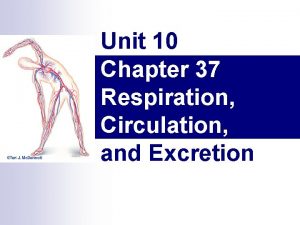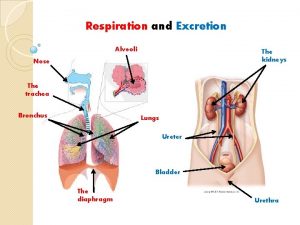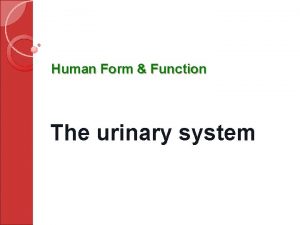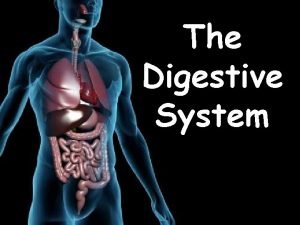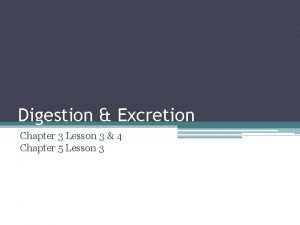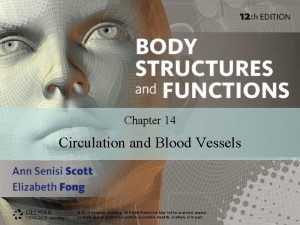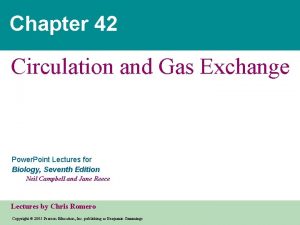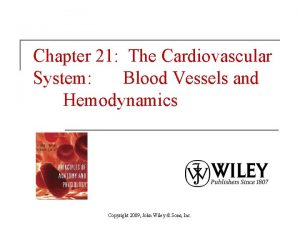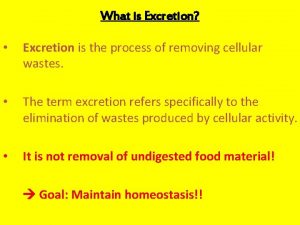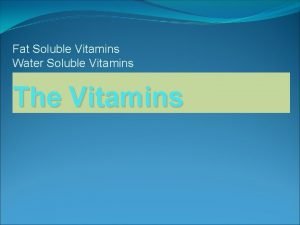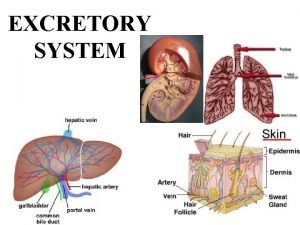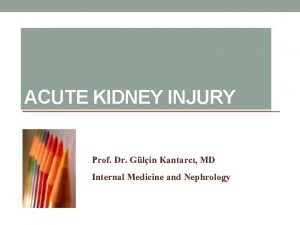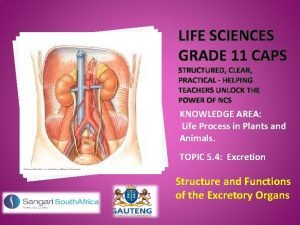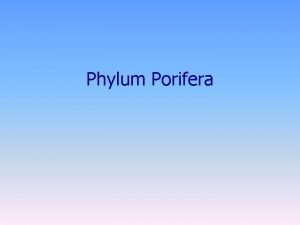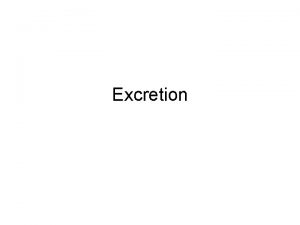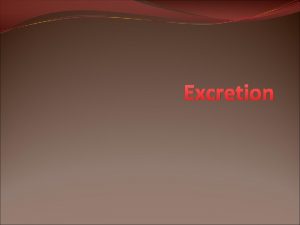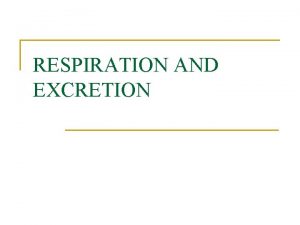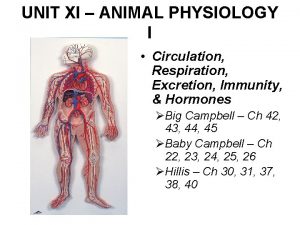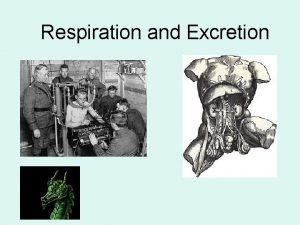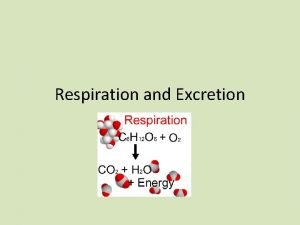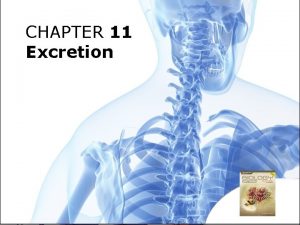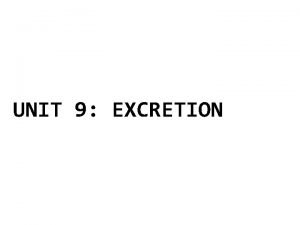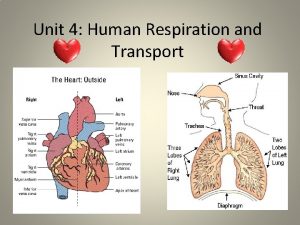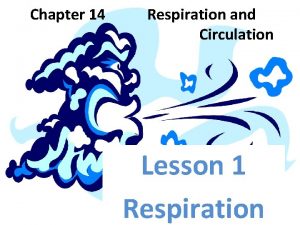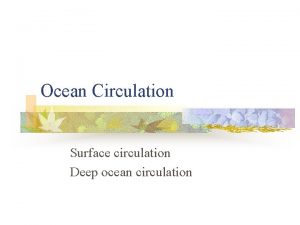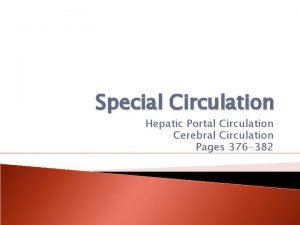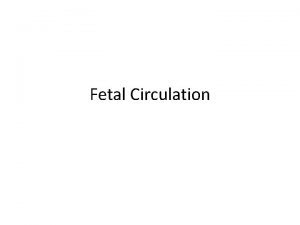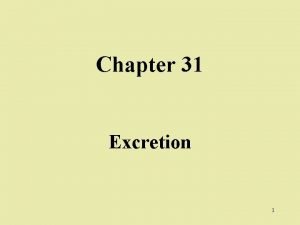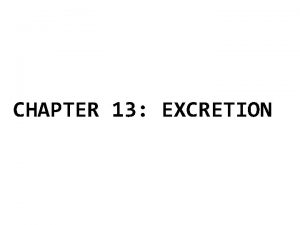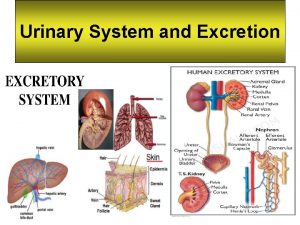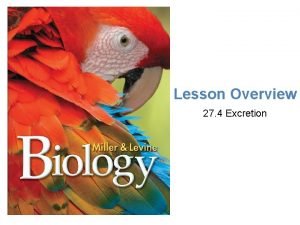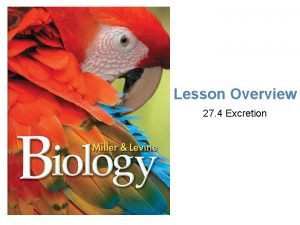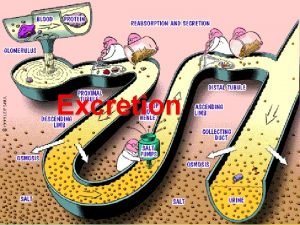Unit 10 Chapter 37 Respiration Circulation and Excretion


























- Slides: 26

Unit 10 Chapter 37 Respiration, Circulation, and Excretion

The Respiratory System Pathway of air: n Nasal passages = to warm, moisten, & filter n Pharynx = throat n Epiglottis = cartilage flap covering opening of trachea, prevents food from entering n Larynx = voice box n

The Respiratory System n Trachea (windpipe) ¨ surrounded by cartilage rings to prevent collapse n Bronchi bronchioles ¨ successively smaller tubes branching into lungs n Alveoli ¨ small sacs where oxygen & CO 2 are exchanged by simple diffusion

The Respiratory System Types of Respiration: n External Respiration n ¨ Occurs n in lungs, oxygen enters blood Internal Respiration ¨ Occurs in body cells, oxygen enters tissue Which is External? …Internal?

The Respiratory System Mechanics of breathing: n Inhaling = diaphragm contracts, chest enlarges, reduced pressure brings in air n Exhaling = diaphragm relaxes, chest reduces, increased pressure pushes out air n

Diaphragm Click on image to play video.

The Circulatory System: the Blood Plasma n Straw colored fluid portion of blood n Transports food, cell wastes, hormones, antibodies, etc n

The Circulatory System: the Blood Red Blood Cells n Small, disc-shaped cells without nuclei n Contains Hemoglobin, which gives RBCs the ability to transport oxygen n

The Circulatory System: the Blood White Blood Cells n Large, nucleated cells without color n Change shape to slip in & out of vessels; for surrounding and engulfing foreign substances n

The Circulatory System: the Blood Platelets n Very small cell fragments n Help clot the blood after an injury n Platelets

The Circulatory System: the Blood n Blood Types A, B, AB & O are determined by antigens: n Antigens are substances that stimulate an immune response in the body n Plasma contains antibodies: n Antibodies are Y-shaped proteins that match with antigens


The Circulatory System: the Vessels Arteries n Large, thick-walled, muscular vessels n Carry blood away from the heart n

The Circulatory System: the Vessels Veins n Large, less muscular vessels with valves to prevent backflow of blood n Carry blood toward the heart n

Veins Click on image to play video.

The Circulatory System: the Vessels Capillaries n Microscopic blood vessels branching throughout body tissues n One cell thick walls allow exchange of materials between blood & tissues n

The Circulatory System: the heart Chambers of the heart: n Atria n Upper, thin-walled chambers that receive blood from body n Ventricles n Lower, muscular chambers that pump blood to the entire body n

The Circulatory System: the heart Blood vessels: n Vena cavae are the largest veins that enter Right Atrium n Pulmonary Artery takes blood to lungs, while Pulmonary Veins bring it back to heart n Aorta is the largest artery that leaves the Left ventricle n

Circulation of blood through the heart

Circulation of blood through the body

The Circulatory System: the heart Pulse n The surge of blood through an artery; can measure the number of heartbeats/minute n Blood Pressure n The force that blood exerts on the blood vessels; directly relates to heart health n

EKG Click on image to play video.


The Urinary System n Kidneys ¨ Filter the blood to remove wastes, maintaining homeostasis of the body fluids n Nephron ¨ About one million filtering units per kidney

The Urinary System n Ureters ¨ Tubes connecting kidney to bladder n Urinary bladder ¨ Temporary storage of urine n Urethra ¨ Passes urine from bladder out of the body

Kidney Click on image to play video.
 Chapter 37 respiration circulation and excretion
Chapter 37 respiration circulation and excretion Alveoli
Alveoli Single vs double circulatory system
Single vs double circulatory system Single circulation and double circulation
Single circulation and double circulation Blood air barrier cells
Blood air barrier cells Internal respiration vs external respiration
Internal respiration vs external respiration Internal vs external respiration
Internal vs external respiration Excretion and elimination
Excretion and elimination Cardiac sphincter
Cardiac sphincter Digestion and excretion lesson 3
Digestion and excretion lesson 3 Chapter 14 circulation and blood vessels
Chapter 14 circulation and blood vessels Chapter 42 circulation and gas exchange
Chapter 42 circulation and gas exchange Chapter 21 blood vessels and circulation
Chapter 21 blood vessels and circulation What is excretion
What is excretion Glomerular filtrate
Glomerular filtrate Scorbutic rosary
Scorbutic rosary What is excretion
What is excretion What is excretion
What is excretion Osmoregulation
Osmoregulation Rifle kriterleri
Rifle kriterleri Excretory system
Excretory system Nicotine excretion
Nicotine excretion What is excretion
What is excretion Vitamin e excretion
Vitamin e excretion Life science grade 11 kidney practical
Life science grade 11 kidney practical Fungi excretion
Fungi excretion Porifera
Porifera
